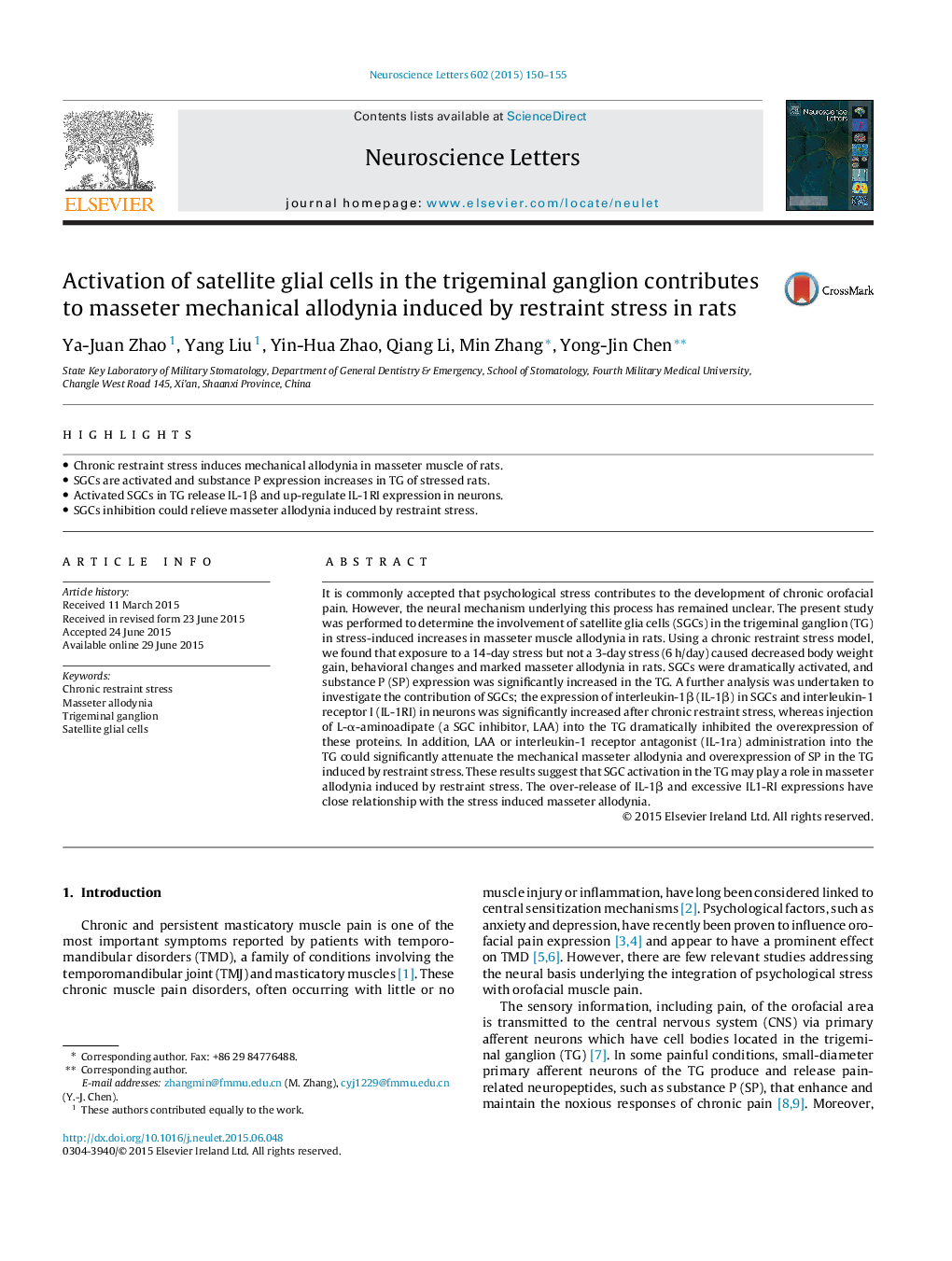| Article ID | Journal | Published Year | Pages | File Type |
|---|---|---|---|---|
| 4343353 | Neuroscience Letters | 2015 | 6 Pages |
•Chronic restraint stress induces mechanical allodynia in masseter muscle of rats.•SGCs are activated and substance P expression increases in TG of stressed rats.•Activated SGCs in TG release IL-1β and up-regulate IL-1RI expression in neurons.•SGCs inhibition could relieve masseter allodynia induced by restraint stress.
It is commonly accepted that psychological stress contributes to the development of chronic orofacial pain. However, the neural mechanism underlying this process has remained unclear. The present study was performed to determine the involvement of satellite glia cells (SGCs) in the trigeminal ganglion (TG) in stress-induced increases in masseter muscle allodynia in rats. Using a chronic restraint stress model, we found that exposure to a 14-day stress but not a 3-day stress (6 h/day) caused decreased body weight gain, behavioral changes and marked masseter allodynia in rats. SGCs were dramatically activated, and substance P (SP) expression was significantly increased in the TG. A further analysis was undertaken to investigate the contribution of SGCs; the expression of interleukin-1β (IL-1β) in SGCs and interleukin-1 receptor I (IL-1RI) in neurons was significantly increased after chronic restraint stress, whereas injection of L-α-aminoadipate (a SGC inhibitor, LAA) into the TG dramatically inhibited the overexpression of these proteins. In addition, LAA or interleukin-1 receptor antagonist (IL-1ra) administration into the TG could significantly attenuate the mechanical masseter allodynia and overexpression of SP in the TG induced by restraint stress. These results suggest that SGC activation in the TG may play a role in masseter allodynia induced by restraint stress. The over-release of IL-1β and excessive IL1-RI expressions have close relationship with the stress induced masseter allodynia.
